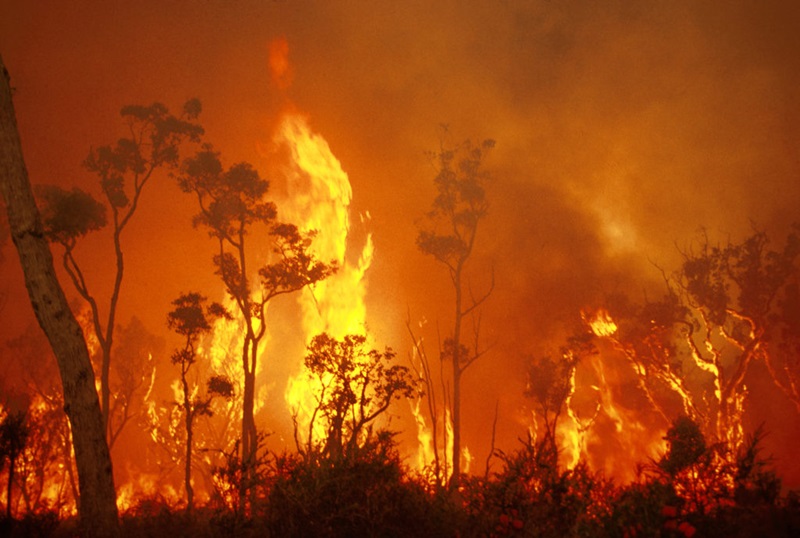BMP Fundamentals: Securing Your Building Versus Bushfire Risks
BMP Fundamentals: Securing Your Building Versus Bushfire Risks
Blog Article
Vital Tips for Bushfire Administration to Make Sure Fire Defense

Understanding Bushfire Risk Levels
Recognizing the differing levels of bushfire danger is essential for reliable preparation and preparation in mitigating potential hazards to lives and residential properties. Bushfire risk degrees are generally categorized based upon factors such as climate condition, gas schedule, topography, and historic fire actions. By understanding these risk degrees, neighborhoods and people can proactively apply methods to minimize susceptability and improve resilience in the face of potential bushfire occasions.
The first degree of bushfire threat is reduced danger, where the chance of a bushfire taking place and creating significant damage is minimal. Risky levels symbolize a significant hazard, with problems favorable to quick fire spread and extreme fire actions.
Understanding these bushfire danger levels makes it possible for stakeholders to tailor their preparedness and reaction actions as necessary, ensuring a aggressive and effective approach to bushfire monitoring.
Creating a Defensible Area
Reliable bushfire management starts with developing a defensible space around properties to enhance defense versus prospective fire hazards. A defensible space is a buffer zone that develops an obstacle between a structure and the bordering flammable plant life. This space works as a vital line of defense, providing firefighters a risk-free area to run and helping to lower the threat of a fire infecting the residential property.
When developing a defensible area, it is vital to think about the format of the home and the bordering landscape. Clearing up plants, especially highly combustible plants, within a particular distance of the home can aid stop the quick spread of fires. Additionally, maintaining a well-irrigated zone around the residential or commercial property can additionally boost its defensibility.
Regular maintenance of the defensible area is important to guarantee its performance. This includes cutting overhanging branches, removing dead plants, and maintaining the area complimentary of particles. By investing time and effort into establishing and keeping a defensible space, residential property proprietors can substantially boost their possibilities of shielding their homes and possessions throughout a bushfire.
Carrying Out Fire-Resistant Landscape Design
When creating landscapes to mitigate the threat of bushfires, integrating fireproof aspects is essential for boosting property security and reducing fire hazards. Select plants with high moisture content, low oil content, and marginal dead vegetation to minimize the risk of fire spread.

Creating an Emergency Situation Discharge Plan
Creating a comprehensive emergency discharge plan is essential for making sure the safety and well-being of individuals throughout prospective bushfire cases (Bushfire Management Plan). A reliable evacuation strategy must outline clear procedures to follow in the occasion of a bushfire threat, including designated evacuation courses, assembly points, and communication procedures
To start producing an emergency emptying plan, it is important to assess the certain risks and susceptabilities of your place. Determine multiple discharge routes that bring about safe areas away from the fire, thinking about aspects such as terrain, roadway ease of access, and possible threats. Establish communication channels to look at this website sharp homeowners of an approaching emptying, using approaches such as alarms, message alerts, or door-to-door notices.
Consistently review and exercise the emptying plan with all residents or neighborhood members to ensure every person recognizes their look what i found duties and responsibilities. Conduct drills to examine the performance of the strategy and make any type of essential adjustments. By having a well-prepared evacuation plan in position, you can boost the opportunities of a risk-free and organized emptying throughout a bushfire emergency.
Preserving Fire Safety And Security Equipment
After developing a comprehensive emergency situation discharge prepare for bushfire cases, it is important to prioritize the normal upkeep of fire security devices to make certain optimal performance and readiness. Normal maintenance of fire safety devices such as fire extinguishers, smoke detectors, smoke alarm, and lawn sprinkler is essential in safeguarding lives and home during a bushfire. When required., performing routine evaluations, testing, and maintenance of these gadgets by qualified experts is essential to ensure they are in functioning order.
Fire extinguishers should be examined frequently for pressure levels, visible damage, and appropriate performance. Smoke alarm need to have their batteries changed at the very least as soon as a year and go through monthly testing to guarantee they are operational. Fire alarm systems and lawn sprinkler systems ought to be inspected occasionally to verify they are attached and working properly. In addition, it is essential to maintain fire safety and security devices accessible, unblocked, and plainly labeled for simple recognition during an emergency situation. By diligently maintaining fire security equipment, people can enhance their readiness and reaction abilities in case of a bushfire.
Verdict
To conclude, effective bushfire monitoring includes recognizing risk degrees, creating defensible check here spaces, implementing fire-resistant landscaping, developing evacuation strategies, and keeping fire safety equipment. By following these vital pointers, people can ensure far better fire protection and safety for their properties and communities. It is essential to focus on positive steps to reduce the threats connected with bushfires and to be prepared for emergencies.
By understanding the subtleties of bushfire threat levels, developing defensible spaces, executing fireproof landscaping, producing thorough emptying strategies, and guaranteeing the upkeep of fire safety and security tools, individuals and communities can significantly reinforce their strength versus the ravages of wildfires - Bushfire Risk. These suggestions are not only important for protecting against prompt fire dangers yet also for promoting long-lasting fire protection strategies that can make a significant difference in the face of rising bushfire risks
High-risk levels represent a considerable threat, with problems conducive to rapid fire spread and extreme fire behavior. Normal upkeep of fire security devices such as fire extinguishers, smoke detectors, fire alarms, and sprinkler systems is critical in securing lives and home throughout a bushfire.In final thought, reliable bushfire administration includes comprehending risk degrees, creating defensible spaces, executing fire-resistant landscape design, establishing discharge plans, and preserving fire security equipment.
Report this page